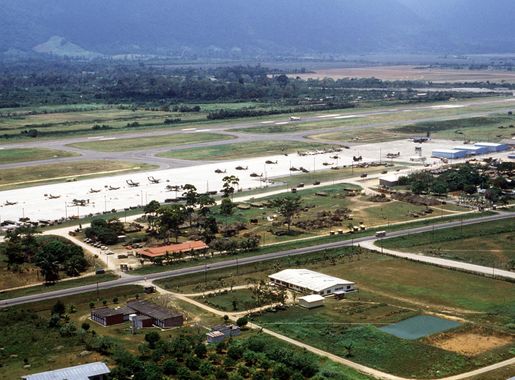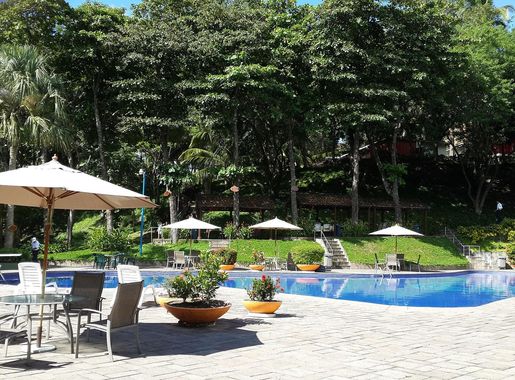
The Untamed Beauty of Pico Bonito National Park
Discover the lush rainforests, diverse wildlife, and thrilling adventures at Pico Bonito National Park, one of Honduras' largest protected areas and a nature lover's paradise.
Pico Bonito National Park is a true gem in the heart of Honduras. Located in the northern part of the country, this park offers a rich tapestry of biodiversity, lush rainforests, and breathtaking mountain landscapes. The park spans over 1,073 square kilometers, making it one of the largest and most significant protected areas in Honduras. Adventure seekers will find no shortage of activities here. Whether it's hiking through dense jungles, bird watching, or exploring cascading waterfalls, Pico Bonito provides an immersive natural experience. The park is home to a variety of wildlife, including jaguars, ocelots, and over 400 species of birds, making it a paradise for nature enthusiasts. The Cangrejal River, which flows through the park, is a hotspot for white-water rafting and kayaking. The river's challenging rapids attract thrill-seekers from around the world. For those looking for a more relaxed experience, there are plenty of tranquil spots perfect for swimming and picnicking. The park also offers several eco-lodges and guided tours, ensuring a comfortable and informative visit.
Local tips in Pico Bonito National Park
- Bring sturdy hiking boots; the trails can be rugged and slippery.
- Hire a local guide to enhance your experience and ensure safety.
- Visit during the dry season (February to June) for optimal weather conditions.
- Don't forget insect repellent; the rainforests are home to many insects.
- Stay at an eco-lodge for an immersive and sustainable experience.
The Untamed Beauty of Pico Bonito National Park
Pico Bonito National Park is a true gem in the heart of Honduras. Located in the northern part of the country, this park offers a rich tapestry of biodiversity, lush rainforests, and breathtaking mountain landscapes. The park spans over 1,073 square kilometers, making it one of the largest and most significant protected areas in Honduras. Adventure seekers will find no shortage of activities here. Whether it's hiking through dense jungles, bird watching, or exploring cascading waterfalls, Pico Bonito provides an immersive natural experience. The park is home to a variety of wildlife, including jaguars, ocelots, and over 400 species of birds, making it a paradise for nature enthusiasts. The Cangrejal River, which flows through the park, is a hotspot for white-water rafting and kayaking. The river's challenging rapids attract thrill-seekers from around the world. For those looking for a more relaxed experience, there are plenty of tranquil spots perfect for swimming and picnicking. The park also offers several eco-lodges and guided tours, ensuring a comfortable and informative visit.
When is the best time to go to Pico Bonito National Park?
Iconic landmarks you can’t miss
Parque El Picacho
Discover the breathtaking landscapes and rich biodiversity of Parque El Picacho, a top national park in Tegucigalpa perfect for nature lovers and adventurers.
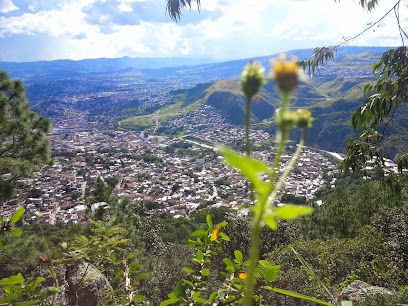
Santa Bárbara Central Park
Experience the natural beauty and vibrant community spirit at Santa Bárbara Central Park, a perfect getaway for tourists in Santa Bárbara.

Parque Nacional Celaque
Explore the stunning Parque Nacional Celaque, a natural wonder in Honduras with breathtaking views, diverse wildlife, and unforgettable hiking experiences.
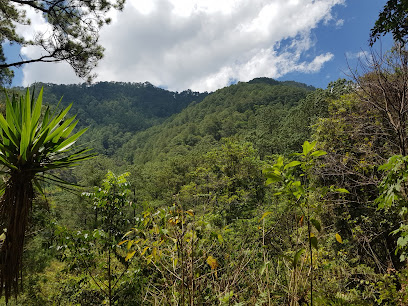
Parque Nacional La Tigra
Experience the breathtaking beauty and rich biodiversity of Parque Nacional La Tigra, a must-visit nature preserve in Honduras for all nature lovers.
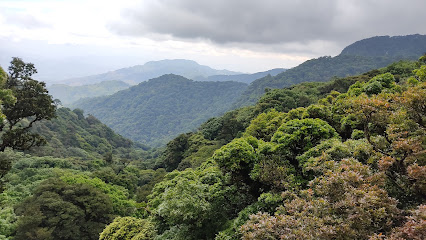
Malecón Guillermo Anderson
Discover the stunning views and vibrant atmosphere at Malecón Guillermo Anderson, a beautiful park in La Ceiba, Honduras, perfect for relaxation and recreation.

Apart Hotel Pico Bonito
Discover tranquility and adventure at Apart Hotel Pico Bonito in La Ceiba, where comfort meets the lush beauty of nature.

The Lodge & Spa at Pico Bonito
Experience luxury and nature at The Lodge & Spa at Pico Bonito, where relaxation meets adventure in the heart of Honduras.
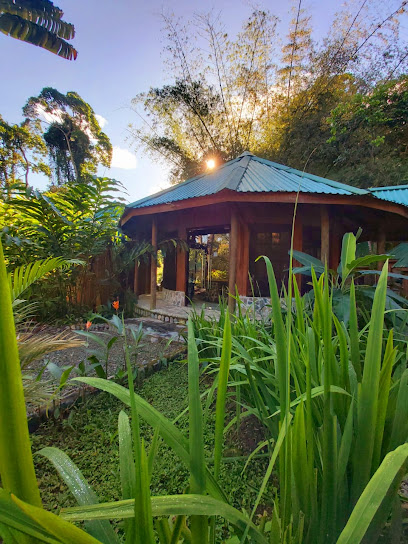
Parque Nacional Pico Bonito
Discover the breathtaking biodiversity and scenic beauty of Parque Nacional Pico Bonito, a premier hiking destination in Honduras.
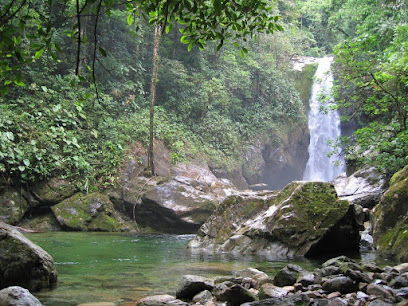
Villas Pico Bonito
Discover the perfect blend of nature and comfort at Villas Pico Bonito, your tropical escape in La Ceiba, Honduras.
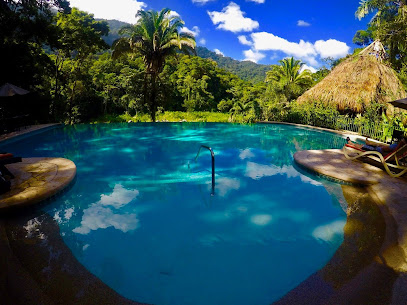
Parque Nacional Pico Pijol
Explore the breathtaking landscapes and rich biodiversity of Parque Nacional Pico Pijol, a hidden gem in Honduras perfect for nature lovers and adventurers.
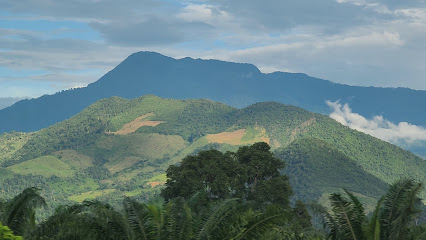
Parque Nacional Jeannette Kawas
Discover the breathtaking beauty and diverse wildlife of Parque Nacional Jeannette Kawas, a stunning national park on Honduras' Caribbean coast.
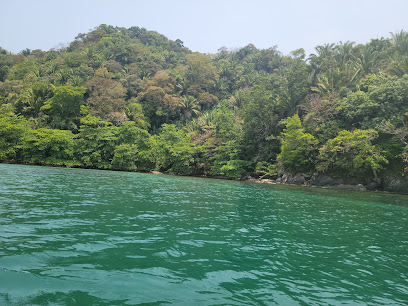
Castillo Bellucci
Explore the stunning Castillo Bellucci, an open-air museum in Tegucigalpa celebrating Honduran history, art, and culture amidst beautiful gardens.
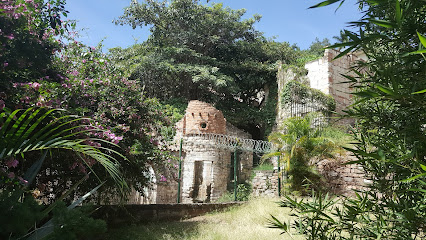
Cascada El Bejuco
Explore the enchanting Cascada El Bejuco in La Ceiba, a breathtaking waterfall surrounded by lush nature, ideal for adventure seekers and nature lovers.
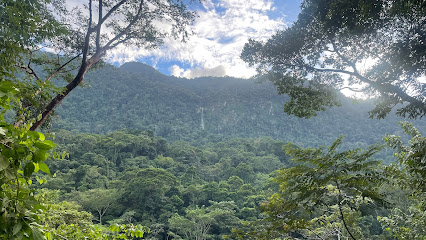
Pico Bonito
Explore the breathtaking Pico Bonito in Atlántida, Honduras - a haven of lush landscapes, rich biodiversity, and endless adventure opportunities.
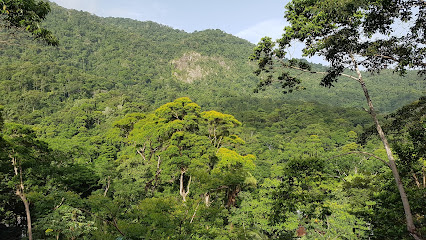
Fundación Parque Nacional Pico Bonito- FUPNAPIB
Explore the lush landscapes and rich biodiversity of Fundación Parque Nacional Pico Bonito, a true haven for nature lovers in Honduras.
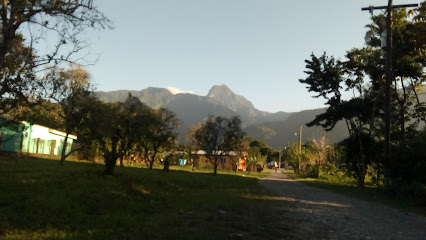
Unmissable attractions to see
Muelle Turistico Reynaldo Canales
Discover the vibrant Muelle Turistico Reynaldo Canales, a picturesque pier in La Ceiba, Honduras, perfect for local culture and stunning Caribbean views.
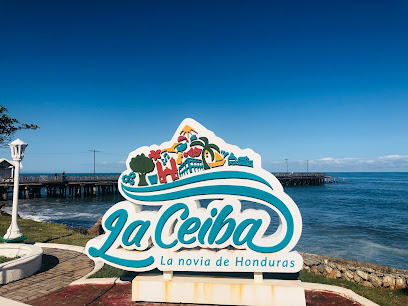
Parador Fotografico LA CEIBA
Explore the breathtaking beauty of Parador Fotografico LA CEIBA, a stunning coastal photography paradise in Honduras.
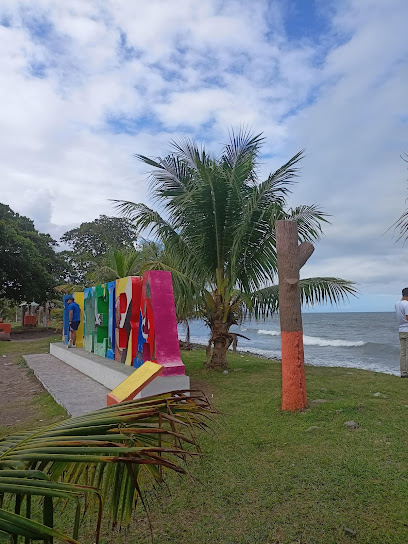
Glenda's Paradise
Explore Glenda's Paradise in Sambo Creek, Honduras, where tropical beauty meets cultural richness for an unforgettable travel experience.
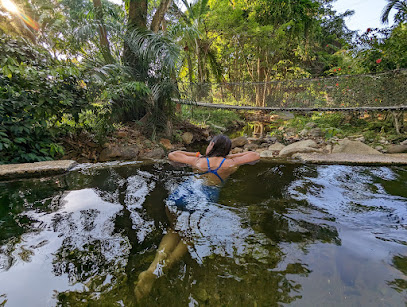
Malecón Ceiba
Discover the natural beauty of Malecón Ceiba, a stunning hiking area in La Ceiba, Honduras, perfect for adventure seekers and nature lovers.
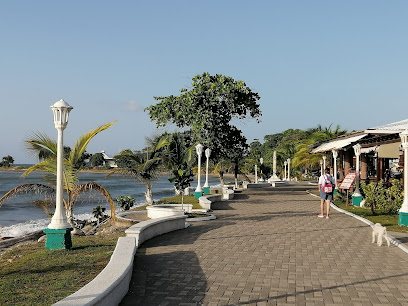
Las 3 Posas Balneario
Explore the lush paradise of Las 3 Posas Balneario, a tranquil oasis in La Ceiba, Honduras, perfect for relaxation and family fun amidst nature's beauty.
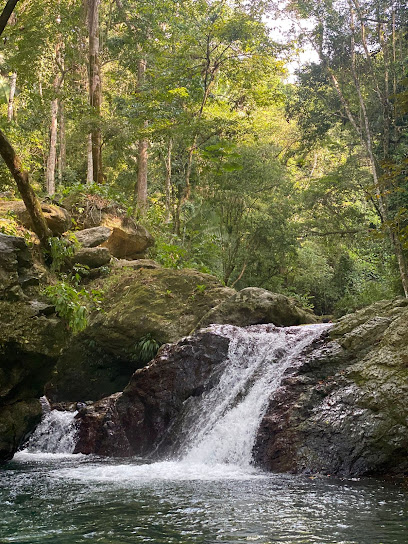
CARIBBEAN LODGE
Experience the natural beauty and cultural richness of Caribbean Lodge in La Ceiba, a perfect getaway for relaxation and adventure.
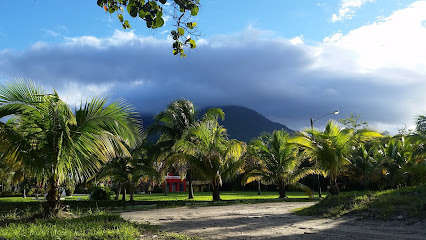
Desvio a Rio Zacate
Explore the tranquil beauty of Desvio a Rio Zacate, a nature preserve in Atlántida, Honduras, perfect for hiking, birdwatching, and relaxation.
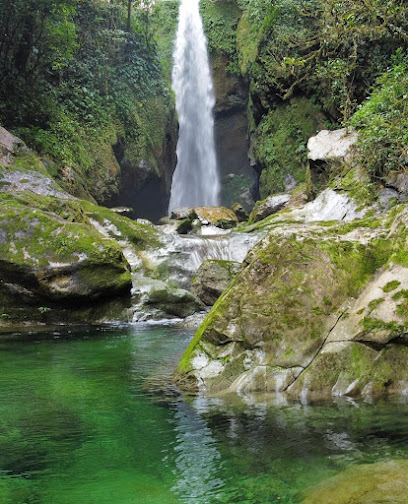
Museo de Entomología del CURLA
Explore the incredible diversity of insects at Museo de Entomología del CURLA in La Ceiba, a captivating museum experience for all ages.
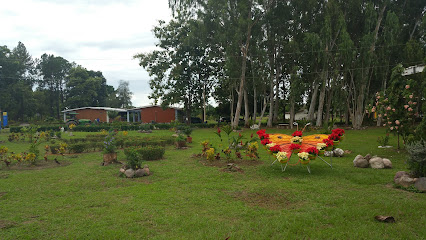
Tourist Options
Explore La Ceiba: Your Adventure Awaits in the Heart of Honduras with Stunning Island Tours and Rich Cultural Experiences.

El Estero La Ceiba Atlantida
Explore the natural beauty and tranquility of El Estero La Ceiba Atlantida in Honduras, a perfect destination for nature lovers and outdoor adventurers.
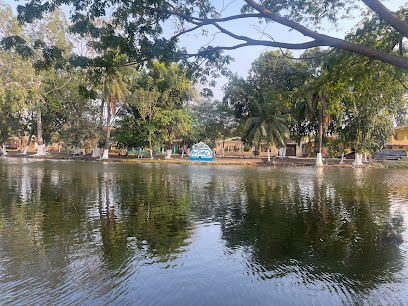
Balneario Mazapán
Experience the serene beaches and vibrant culture of Balneario Mazapán, a must-visit tourist attraction in La Ceiba, Honduras.
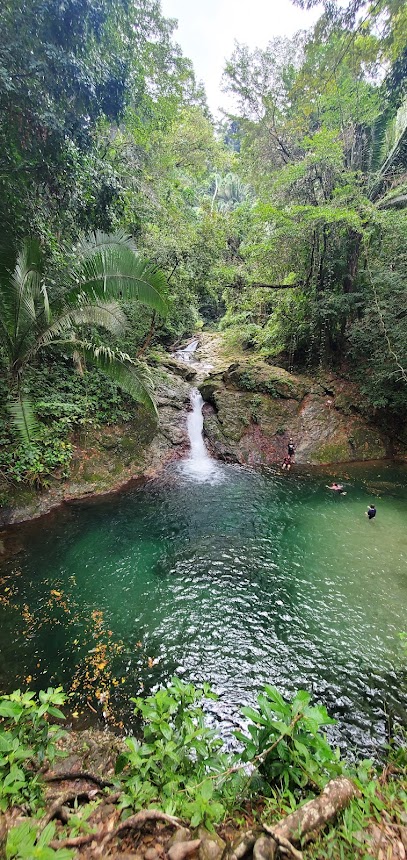
Estacion Cuero y Salado
Experience the lush beauty and diverse wildlife of Estacion Cuero y Salado, a must-visit natural attraction in La Unión, Atlántida, Honduras.
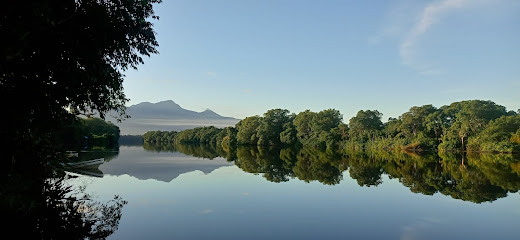
Cascada las Sirenas
Discover the enchanting beauty of Cascada las Sirenas, a stunning waterfall in Sambo Creek, Honduras, perfect for nature lovers and adventure seekers.
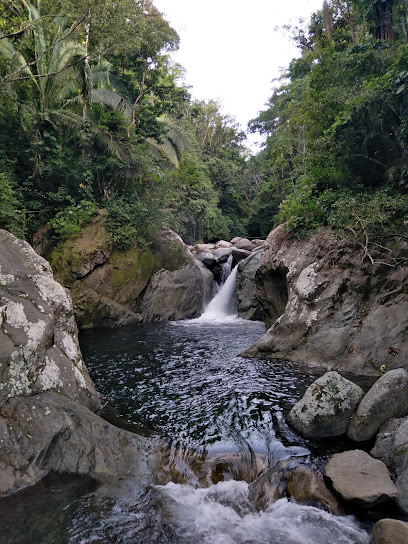
Swinford Park
Experience the natural beauty and tranquility of Swinford Park in La Ceiba, a perfect retreat for families and nature enthusiasts alike.
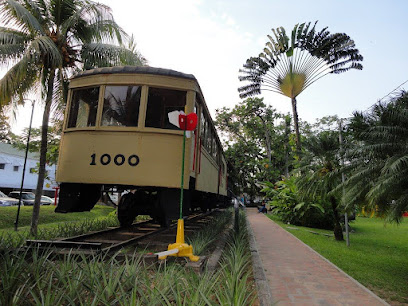
Recreativo Mamapucxy Park
Explore the serene landscapes and vibrant wildlife at Recreativo Mamapucxy Park, a natural retreat in La Ceiba, Atlántida, perfect for relaxation and outdoor fun.
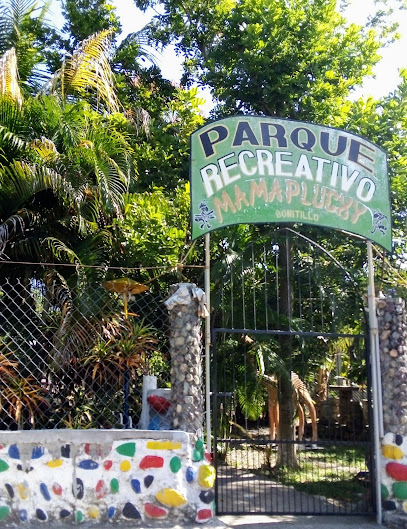
Essential places to dine
La Cumbre
Discover La Cumbre: A top-tier restaurant in El Hatillo offering exquisite cuisine and stunning views for an unforgettable dining experience.
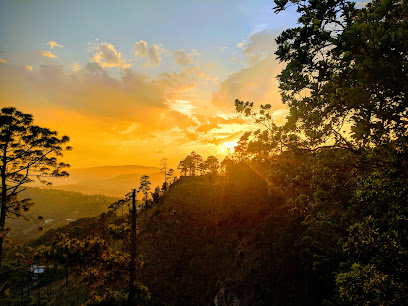
Cric Cric Burger
Discover delicious burgers at Cric Cric Burger in La Ceiba—where flavor meets fun along Honduras' picturesque coastline.
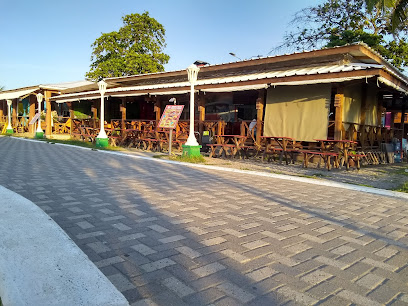
Nichas Burger La Ceiba
Discover delicious gourmet burgers at Nichas Burger La Ceiba – where flavor meets vibrant atmosphere in Honduras' coastal paradise.
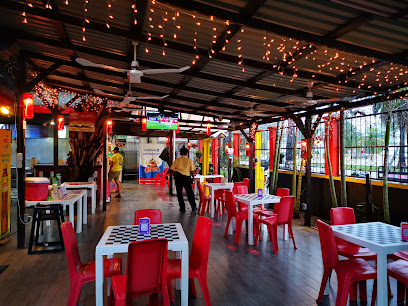
The Marine Grill and Seafood Restaurant
Experience authentic Caribbean cuisine at The Marine Grill & Seafood Restaurant in Omoa – where every meal is a celebration by the sea.
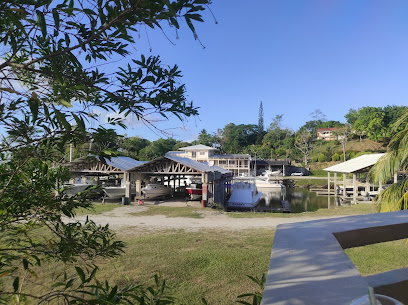
Happy Harry's HideAway
Experience vibrant flavors and warm hospitality at Happy Harry's HideAway in West End - a must-visit culinary destination.
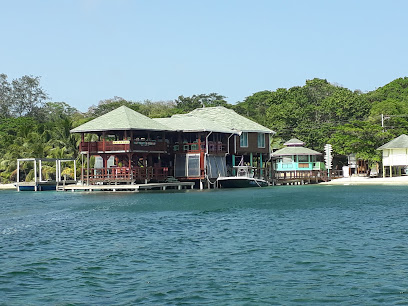
Restaurante TipiKtracho
Experience authentic Honduran cuisine at Restaurante TipiKtracho in La Ceiba – where every dish tells a story.
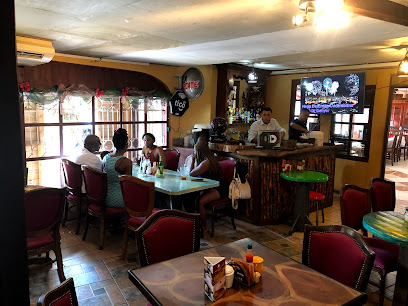
The Lodge & Spa at Pico Bonito
Discover luxury and adventure amidst nature's paradise at The Lodge & Spa at Pico Bonito in Honduras.
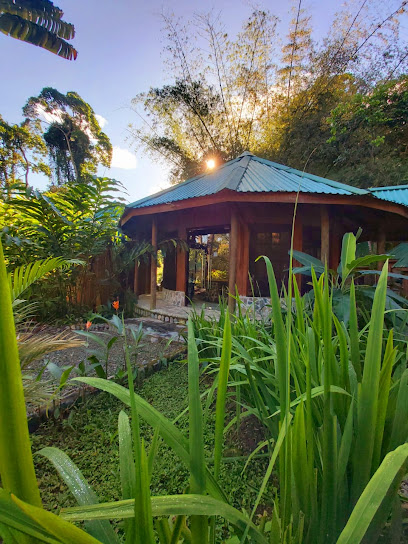
Restaurante Kabasa? Sambo Creek
Discover authentic Honduran cuisine at Restaurante Kabasa in beautiful Sambo Creek – where every dish tells a story.

Parque Nacional Pico Bonito
Discover lush rainforests and stunning waterfalls at Parque Nacional Pico Bonito in La Ceiba - a paradise for nature lovers and adventurers.
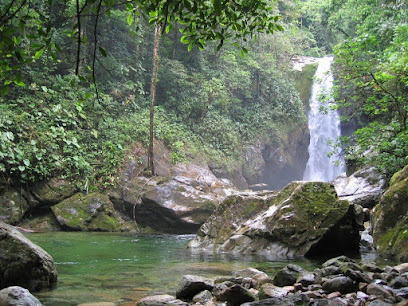
Sushi Totemo La Ceiba
Experience exquisite sushi at Sushi Totemo La Ceiba – where fresh ingredients meet innovative culinary art.
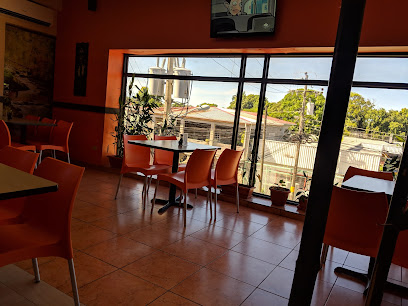
Villas Pico Bonito
Discover tranquility and adventure at Villas Pico Bonito in La Ceiba - your gateway to Honduras' natural wonders.
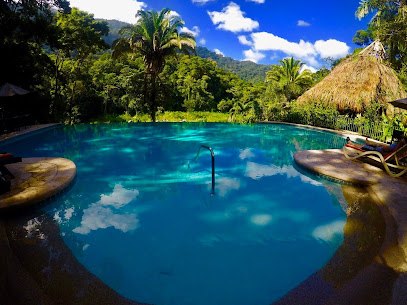
Restaurante Las Hamacas
Experience authentic Honduran cuisine at Restaurante Las Hamacas in La Ceiba - a must-visit culinary destination for all food lovers.
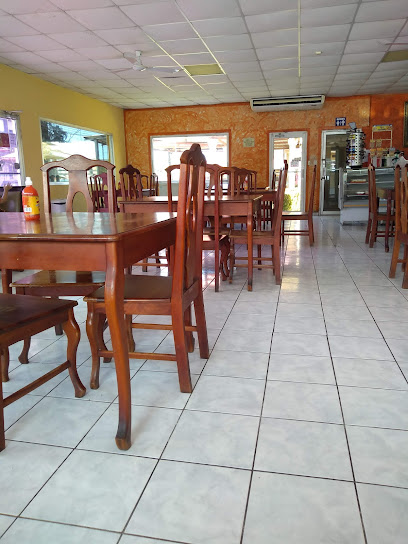
Splash Inn Restaurant
Experience fresh seafood and vibrant island flavors at Splash Inn Restaurant in West End, Roatan - a paradise for food lovers.
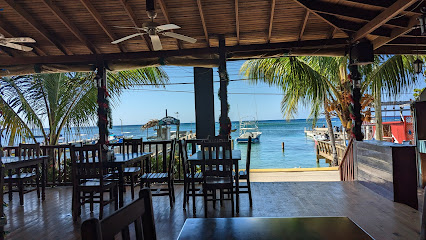
Blue Bahía Beach Grill
Experience exquisite dining with stunning ocean views at Blue Bahía Beach Grill in Roatan - a culinary gem for every traveler.
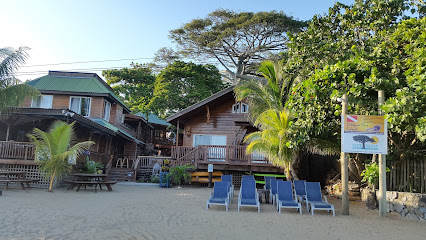
Rojo Verde y Ajo
Discover the flavors of Honduras at Rojo Verde y Ajo - where tradition meets innovation in every dish.
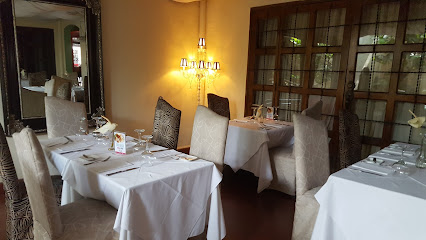
Markets, malls and hidden boutiques
Parque Nacional Pico Bonito
Explore Parque Nacional Pico Bonito: A breathtaking hiking destination in Honduras with stunning landscapes, diverse wildlife, and exhilarating trails.
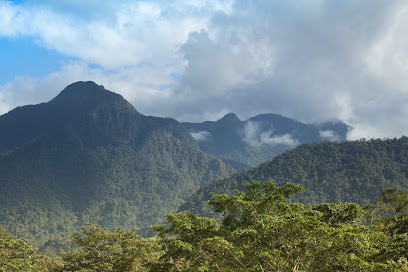
Souvenir El Buen Amigo
Discover authentic Honduran souvenirs at Souvenir El Buen Amigo in La Ceiba – a treasure trove of culture and craftsmanship.
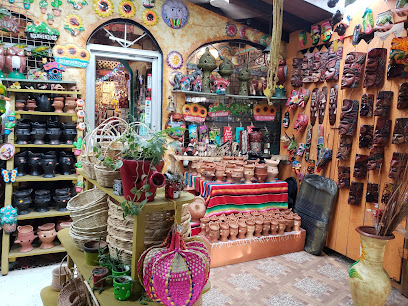
Panadería Pico Bonito
Discover the delightful flavors of La Ceiba at Panadería Pico Bonito, a bakery renowned for its exquisite pastries and warm atmosphere.
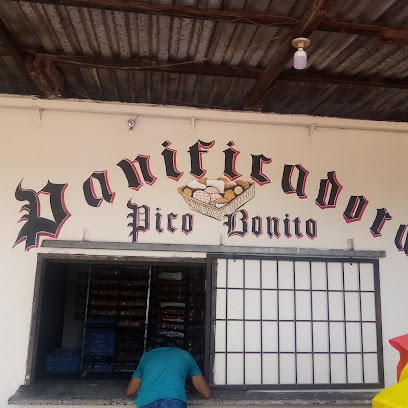
Tienda de muebles rústicos
Explore the unique charm of Honduras at Tienda de Muebles Rústicos, where handcrafted furniture tells the story of local artistry and tradition.
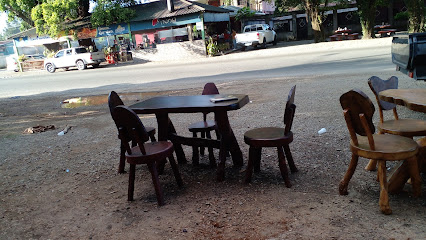
Mi Pulpería La Escondida
Explore the vibrant flavors of La Ceiba at Mi Pulpería La Escondida, a local grocery store rich in authentic Honduran culinary delights.

Pulpería Y Variedes La Bendición
Discover the essence of La Ceiba at Pulpería Y Variedes La Bendición, a vibrant store offering local goods and an authentic cultural experience.

Pulperia:Gina
Explore Pulperia: Gina in La Ceiba for handcrafted treasures and unique home goods that showcase the vibrant culture of Honduras.

Sweet Gift
Explore Sweet Gift in La Ceiba for unique souvenirs and authentic Honduran crafts that capture the spirit of your travels.

Pulpería La Popular
Discover local life at Pulpería La Popular, the charming convenience store in La Ceiba offering a taste of authentic Honduran culture.

Henry's Fragance
Henry's Fragrance in La Ceiba offers a unique shopping experience with an extensive selection of exquisite perfumes and personalized scents.

Tienda bonita
Explore Tienda Bonita in La Ceiba for unique clothing and accessories that reflect the vibrant culture of Honduras.

Lola's Design
Explore Lola's Design in La Ceiba for unique handcrafted gifts that embody the spirit of Honduras and make perfect souvenirs for your travels.

Tienda las 3B, tienda ropa el pino.
Discover authentic Honduran fashion at Tienda las 3B, a charming clothing store in El Porvenir offering stylish apparel for every taste.
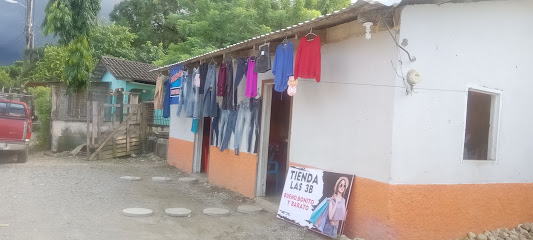
Bazar Hermanitos Calix
Discover unique clothing and accessories at Bazar Hermanitos Calix, a vibrant store in El Pino, Atlántida, reflecting local fashion and culture.

MAY'S DECOR
Explore May's Decor in La Ceiba for unique handcrafted gifts and local treasures that capture the vibrant spirit of Honduras.

Essential bars & hidden hideouts
Luxor Lounge & Bar
Discover the vibrant nightlife of La Ceiba at Luxor Lounge & Bar, a premier destination for cocktails, music, and unforgettable experiences.
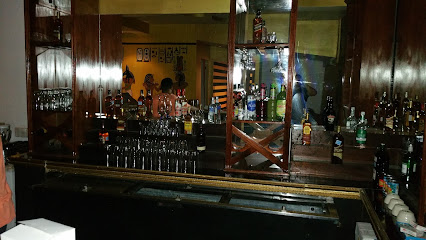
Mata de Chata
Experience the vibrant nightlife at Mata de Chata, La Ceiba's lively bar, offering delicious drinks and a welcoming atmosphere for all.

SOPRANOS BAR 0101
Experience the vibrant nightlife at Sopranos Bar 0101 in La Ceiba, where lively music meets delectable drinks in a welcoming atmosphere.
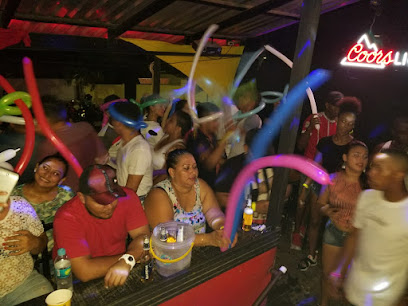
MARINE BAR and GRILL
Discover the lively Marine Bar and Grill in La Ceiba, where fresh seafood meets creative cocktails in a stunning tropical setting.
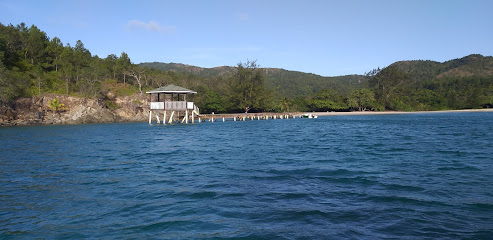
Beer House Y La Esquina del Pollo
Experience La Ceiba's lively bar scene at Beer House Y La Esquina del Pollo, featuring delicious food, diverse beers, and vibrant live music.
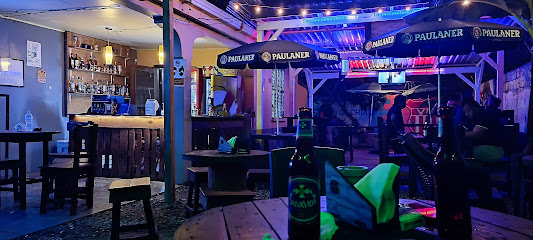
MARQUITO'S PLACE
Discover the lively spirit of La Ceiba at Marquito's Place, your go-to bar for cocktails, local music, and unforgettable experiences.
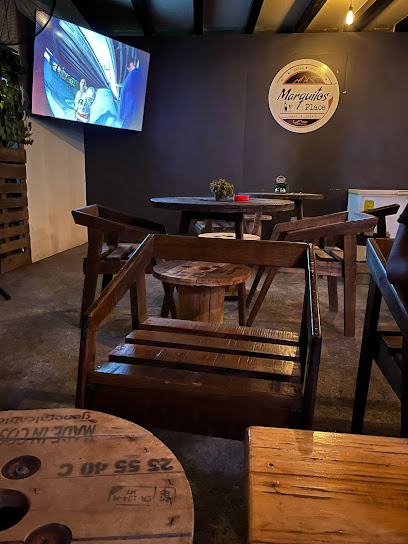
Mojito Bistro
Discover tropical bliss at Mojito Bistro in La Ceiba, where refreshing cocktails meet vibrant nightlife.

Cafiru Bar & Restaurant
Experience La Ceiba's nightlife at Cafiru Bar & Restaurant, where delicious food and vibrant ambiance meet for an unforgettable dining experience.
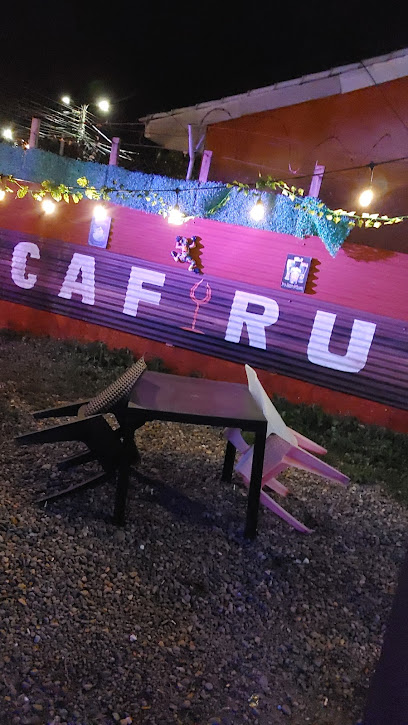
Dee Jay Bar
Dive into the vibrant nightlife of La Ceiba at Dee Jay Bar, where great drinks and a lively atmosphere await every visitor.
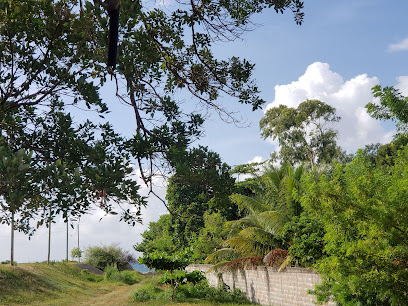
Bakan bar y restaurant
Experience the vibrant nightlife and authentic flavors at Bakan Bar & Restaurant in La Ceiba, Honduras.
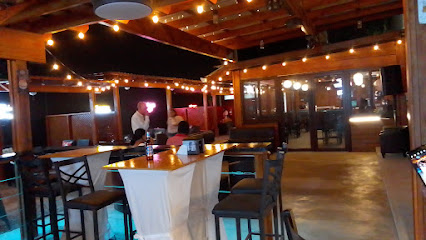
La Palapa
Experience the best of La Ceiba's culinary scene at La Palapa, where flavor meets atmosphere in a charming grill setting.

La Reyes
Discover the vibrant atmosphere and local flavors at La Reyes, a must-visit bar in La Ceiba, perfect for relaxing and socializing.

Cube Bar
Experience the essence of La Ceiba's nightlife at Cube Bar, where vibrant atmosphere meets delicious drinks and great company.

Los Pijazos
Experience the vibrant nightlife at Los Pijazos, La Ceiba's top cocktail bar known for its creative drinks and lively atmosphere.

Mini Stop Bar & Grill
Experience the vibrant nightlife at Mini Stop Bar & Grill in La Ceiba, where local flavors and lively atmosphere create unforgettable memories.
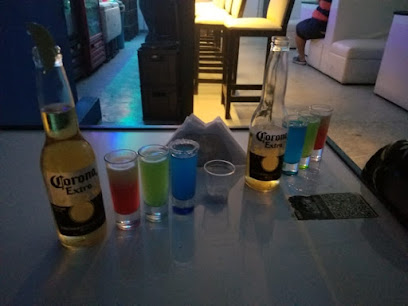
Local Phrases about Pico Bonito National Park
-
- HelloHola
[oh-la] - GoodbyeAdiós
[ah-dee-ohs] - YesSí
[see] - NoNo
[no] - Please/You're welcomePor favor/De nada
[por fah-vor/de nah-dah] - Thank youGracias
[grah-see-ahs] - Excuse me/SorryDisculpe/Lo siento
[dee-skool-pe/loh see-en-toh] - How are you?¿Cómo estás?
[koh-moh es-tahs] - Fine. And you?Bien. ¿Y tú?
[bee-en. ee too] - Do you speak English?¿Hablas inglés?
[ah-blahs een-glays] - I don't understandNo entiendo
[noh en-tee-en-doh]
- HelloHola
-
- I'd like to see the menu, pleaseMe gustaría ver el menú, por favor
[may goos-tah-ree-ah ver el men-oo, por fah-vor] - I don't eat meatNo como carne
[noh koh-moh kar-neh] - Cheers!¡Salud!
[sah-lood] - I would like to pay, pleaseMe gustaría pagar, por favor
[may goos-tah-ree-ah pah-gar, por fah-vor]
- I'd like to see the menu, pleaseMe gustaría ver el menú, por favor
-
- Help!¡Ayuda!
[ah-yoo-dah] - Go away!¡Vete!
[veh-teh] - Call the Police!¡Llame a la Policía!
[yah-meh ah lah poh-lee-see-ah] - Call a doctor!¡Llame a un médico!
[yah-meh ah oon meh-dee-koh] - I'm lostEstoy perdido
[es-toy pehr-dee-doh] - I'm illEstoy enfermo
[es-toy en-fehr-moh]
- Help!¡Ayuda!
-
- I'd like to buy...Me gustaría comprar...
[may goos-tah-ree-ah kohm-prar] - I'm just lookingSolo estoy mirando
[soh-loh es-toy mee-rahn-doh] - How much is it?¿Cuánto cuesta?
[kwan-toh kwehs-tah] - That's too expensiveEso es demasiado caro
[eh-so es deh-mah-syah-doh kah-ro] - Can you lower the price?¿Puede bajar el precio?
[pweh-deh bah-har el preh-syoh]
- I'd like to buy...Me gustaría comprar...
-
- What time is it?¿Qué hora es?
[keh oh-rah es] - It's one o'clockEs la una
[es lah oo-nah] - Half past (10)Las diez y media
[lahs dee-ehs ee meh-dee-ah] - MorningMañana
[mah-nyah-nah] - AfternoonTarde
[tahr-deh] - EveningNoche
[noh-cheh] - YesterdayAyer
[ah-yehr] - TodayHoy
[oy] - TomorrowMañana
[mah-nyah-nah] - 1Uno
[oo-noh] - 2Dos
[dohs] - 3Tres
[trehs] - 4Cuatro
[kwah-troh] - 5Cinco
[seen-koh] - 6Seis
[says] - 7Siete
[syeh-teh] - 8Ocho
[oh-choh] - 9Nueve
[nweh-veh] - 10Diez
[dee-ehs]
- What time is it?¿Qué hora es?
-
- Where's a/the...?¿Dónde está...?
[dohn-deh es-tah] - What's the address?¿Cuál es la dirección?
[kwal es lah dee-rehk-syon] - Can you show me (on the map)?¿Puede mostrarme (en el mapa)?
[pweh-deh mohs-trar-meh (en el mah-pah)] - When's the next (bus)?¿Cuándo es el próximo (bus)?
[kwan-doh es el proh-ksee-moh (boos)] - A ticket (to ....)Un boleto (a ....)
[oon boh-leh-toh (ah)]
- Where's a/the...?¿Dónde está...?
History of Pico Bonito National Park
-
Long before the arrival of Spanish explorers, the region now known as Pico Bonito National Park was inhabited by indigenous peoples. The area was rich in biodiversity and natural resources, which sustained small communities. Archaeological evidence suggests that these early inhabitants engaged in hunting, gathering, and primitive forms of agriculture.
-
In the early 1500s, Spanish conquistadors arrived in Honduras, marking the beginning of colonial influence. The natural resources of the region, including precious metals and fertile land, attracted European settlers. Despite the difficult terrain of Pico Bonito, the Spanish attempted to exploit its resources, often clashing with local indigenous groups.
-
During the 18th and 19th centuries, the fertile lands surrounding Pico Bonito became increasingly important for agriculture. Coffee and banana plantations began to flourish, driven by both local farmers and foreign investors. The growth of agriculture brought economic development to the region but also led to deforestation and habitat loss.
-
Pico Bonito National Park was officially established in 1987 to protect the region's unique biodiversity and natural beauty. Spanning over 1,073 square kilometers, the park encompasses a wide range of ecosystems, from lowland rainforests to cloud forests. The creation of the park marked a significant step in conservation efforts in Honduras.
-
The park holds significant cultural value for the local communities, including indigenous groups who have lived in harmony with the land for centuries. Traditional knowledge and practices related to the region's flora and fauna continue to be passed down through generations. Efforts are made to include these communities in conservation and tourism activities.
-
Today, Pico Bonito National Park is a focal point for conservation efforts in Honduras. Various NGOs and governmental organizations work together to protect its rich biodiversity. Initiatives include reforestation projects, wildlife monitoring, and sustainable tourism practices. These efforts aim to balance ecological preservation with the economic benefits of tourism.
Pico Bonito National Park Essentials
-
Pico Bonito National Park is located in the La Ceiba region of Honduras. The nearest international airport is Golosón International Airport (LCE) in La Ceiba, approximately 20 kilometers away from the park. From La Ceiba, you can take a taxi or a private shuttle to the park, which usually takes around 30 minutes. Alternatively, you can fly into Ramón Villeda Morales International Airport (SAP) in San Pedro Sula and then take a bus or drive to La Ceiba, which is about a 3-hour journey.
-
Within La Ceiba and the surrounding areas, taxis and private shuttles are the most convenient modes of transportation. It's advisable to negotiate the fare before starting your trip. For those looking to explore more independently, car rentals are available in La Ceiba. Public buses and minibuses (locally known as 'colectivos') are also available but can be crowded and less comfortable.
-
The official currency in Honduras is the Honduran Lempira (HNL). Credit cards are accepted in most hotels, restaurants, and larger shops in La Ceiba, but it's advisable to carry cash for smaller establishments and markets. ATMs are available in La Ceiba, but it's wise to have some cash on hand before heading to more remote areas. U.S. dollars are also accepted in some places, but it's better to use the local currency.
-
While Pico Bonito National Park is generally safe for tourists, La Ceiba has areas with higher crime rates, particularly in neighborhoods like Colonia Suyapa and San Judas. Exercise standard precautions such as avoiding walking alone at night, keeping your belongings secure, and staying alert in crowded places. Always use reputable transportation services and avoid displaying valuable items.
-
In case of an emergency, dial 911 for immediate assistance. La Ceiba has medical facilities, including the Hospital Atlántida. It is highly recommended to have travel insurance that covers medical emergencies. For minor health issues, there are pharmacies in La Ceiba where you can purchase over-the-counter medications. Make sure you have a list of emergency contacts and keep them accessible.
-
Fashion: Do wear lightweight, breathable clothing suitable for tropical weather. Don't wear overly revealing clothing, especially in more conservative areas. Religion: Do respect local customs and traditions, especially when visiting religious sites. Public Transport: Do be courteous and offer your seat to elderly passengers. Don't eat or drink on public transport. Greetings: Do greet people with a friendly 'Buenos días' or 'Buenas tardes.' A handshake is also appropriate. Eating & Drinking: Do try local dishes such as baleadas and fresh seafood. Don't refuse food or drink offerings, as it is considered impolite.
-
To experience Pico Bonito National Park like a local, consider hiring a local guide who can show you less-visited trails and share insider knowledge about the flora and fauna. Visit local markets in La Ceiba to buy fresh produce and handmade crafts. Engage with locals, who are often friendly and willing to share stories about the region's culture and history. Don't miss the opportunity to explore the Cangrejal River for activities like rafting and kayaking, which offer a unique perspective of the park's natural beauty.
Trending Landmarks in Pico Bonito National Park
-
Parque El Picacho
-
Santa Bárbara Central Park
-
Parque Nacional Celaque
-
Parque Nacional La Tigra
-
Malecón Guillermo Anderson
-
Apart Hotel Pico Bonito
-
The Lodge & Spa at Pico Bonito
-
Parque Nacional Pico Bonito
-
Villas Pico Bonito
-
Parque Nacional Pico Pijol
-
Parque Nacional Jeannette Kawas
-
Castillo Bellucci
-
Cascada El Bejuco
-
Pico Bonito
-
Fundación Parque Nacional Pico Bonito- FUPNAPIB
Nearby Cities to Pico Bonito National Park
-
Things To Do in Utila
-
Things To Do in Roatán
-
Things To Do in Puerto Cortés
-
Things To Do in San Pedro Sula
-
Things To Do in Tegucigalpa
-
Things To Do in Puerto Barrios
-
Things To Do in Placencia
-
Things To Do in Livingston
-
Things To Do in Hopkins
-
Things To Do in Dangriga
-
Things To Do in Punta Gorda
-
Things To Do in Gracias
-
Things To Do in Rio Dulce
-
Things To Do in Santa Rosa de Copán
-
Things To Do in Belize City


